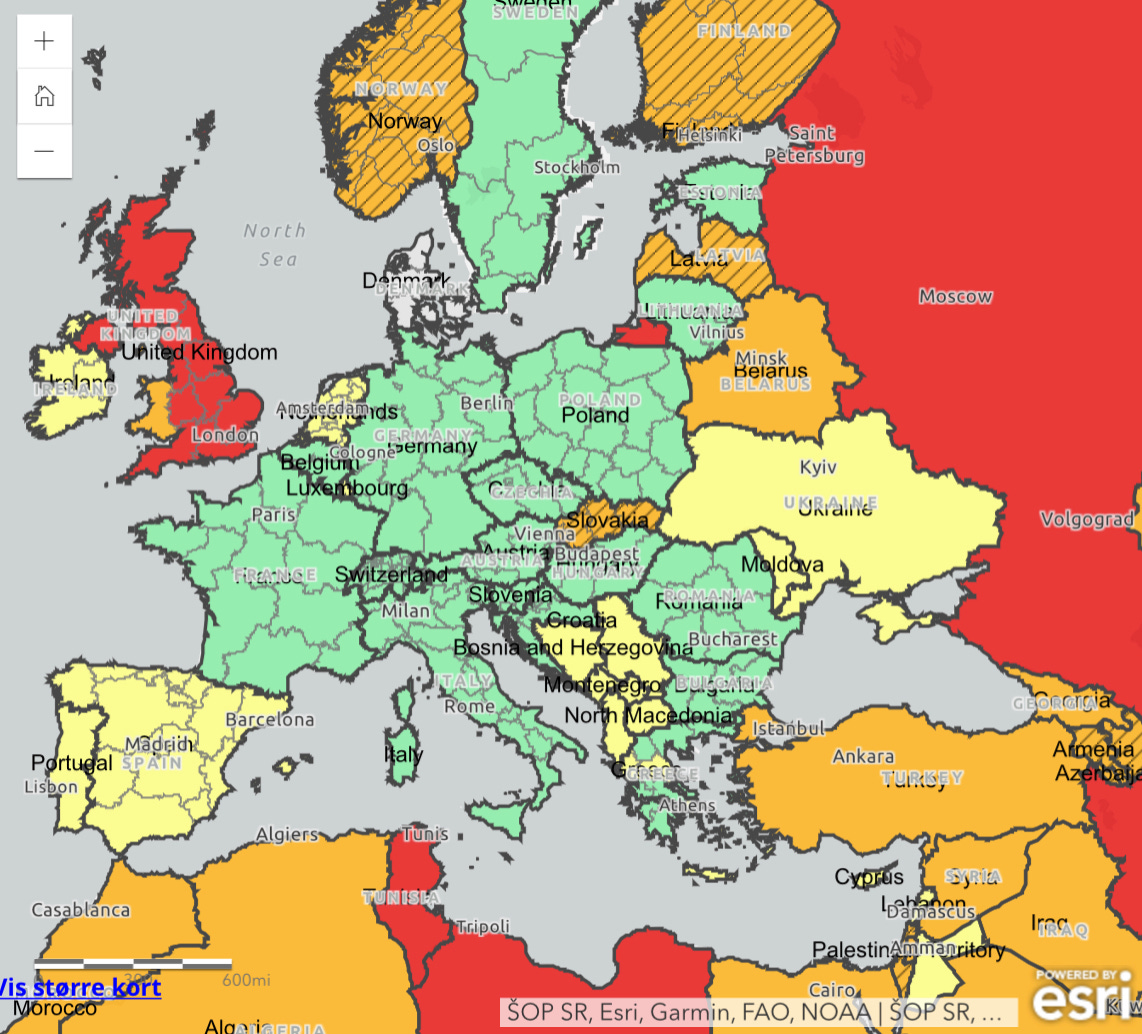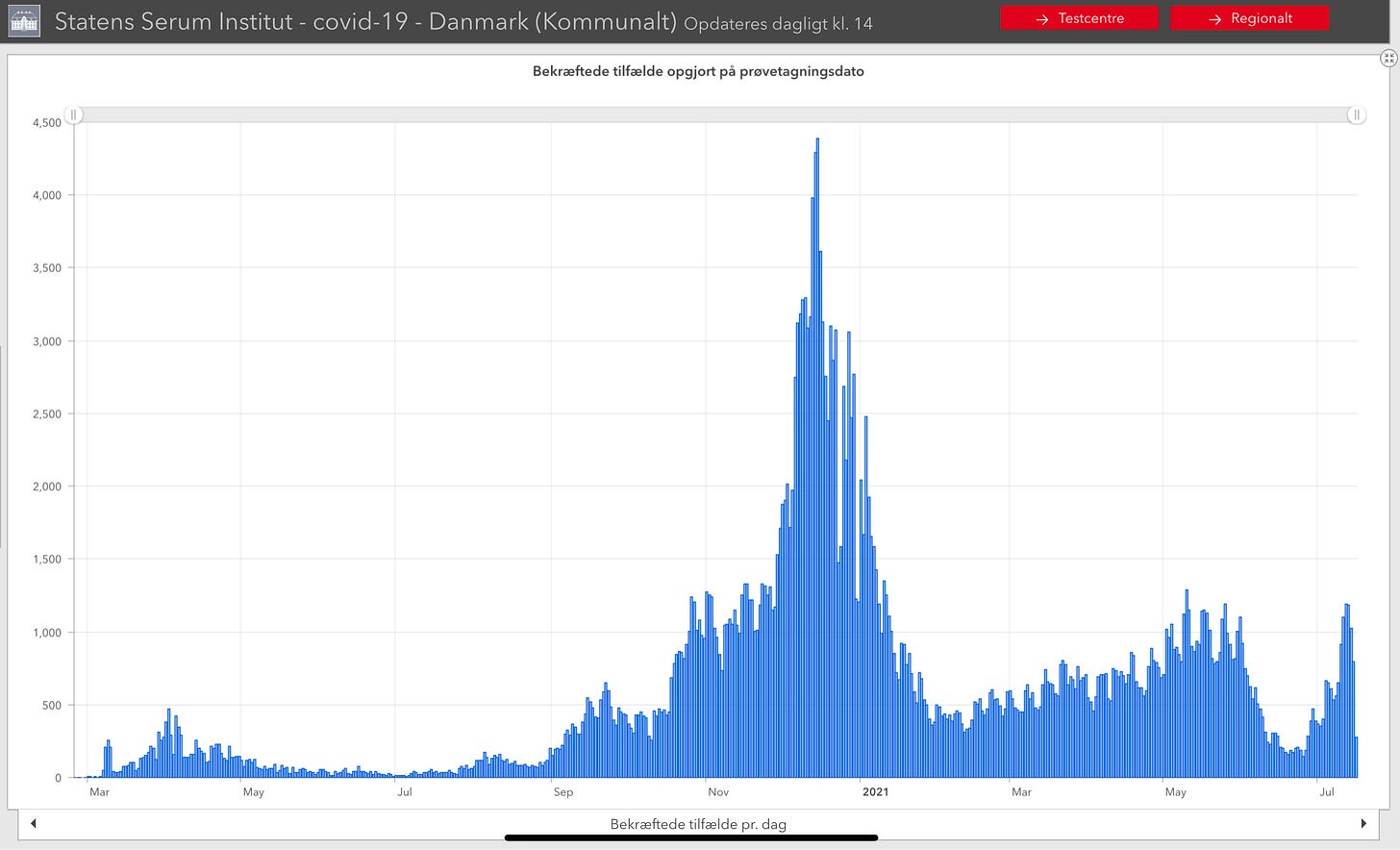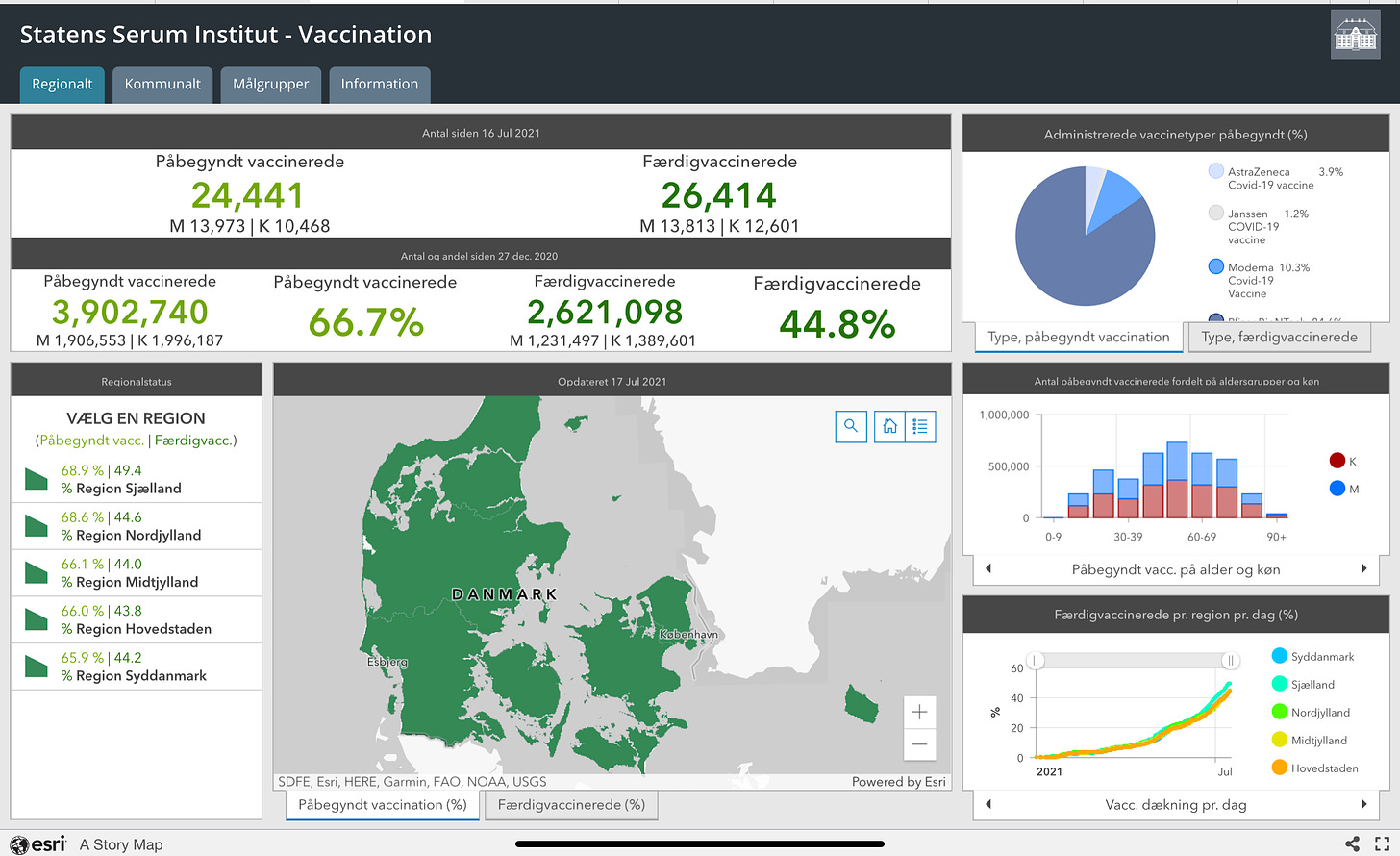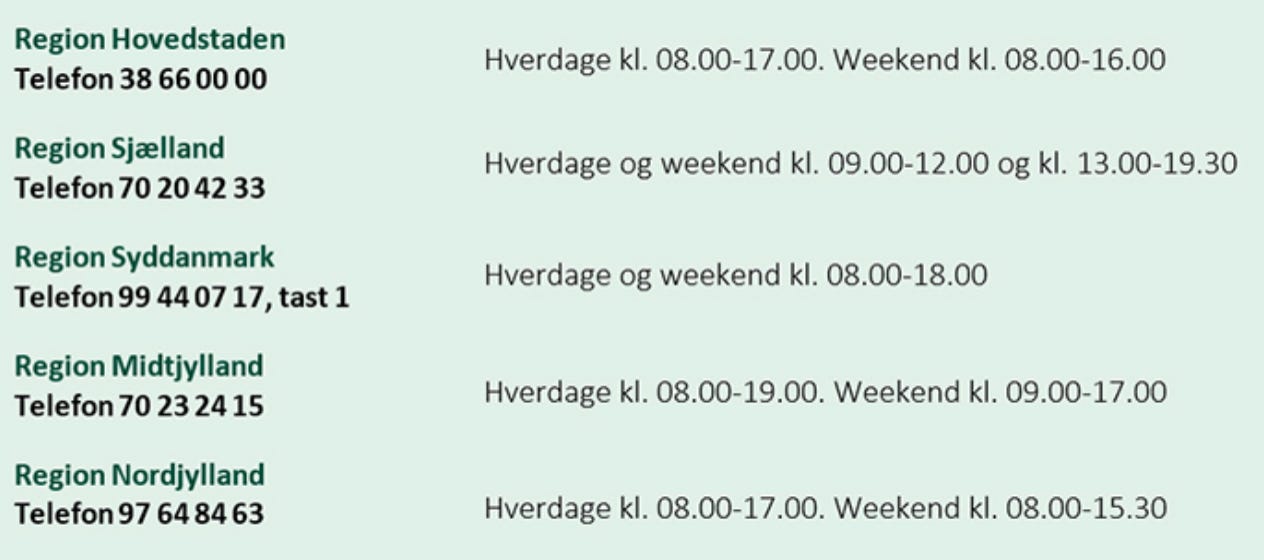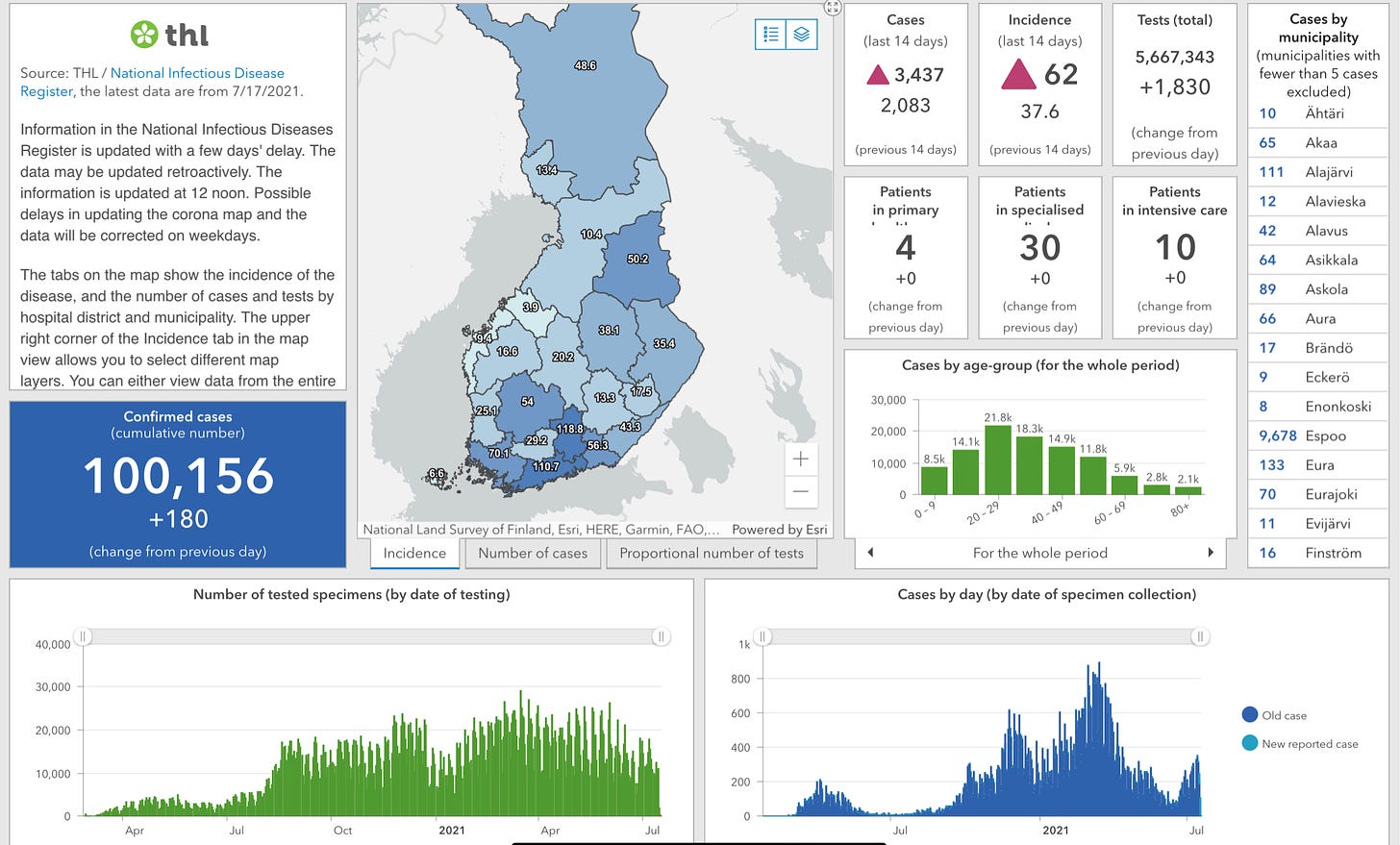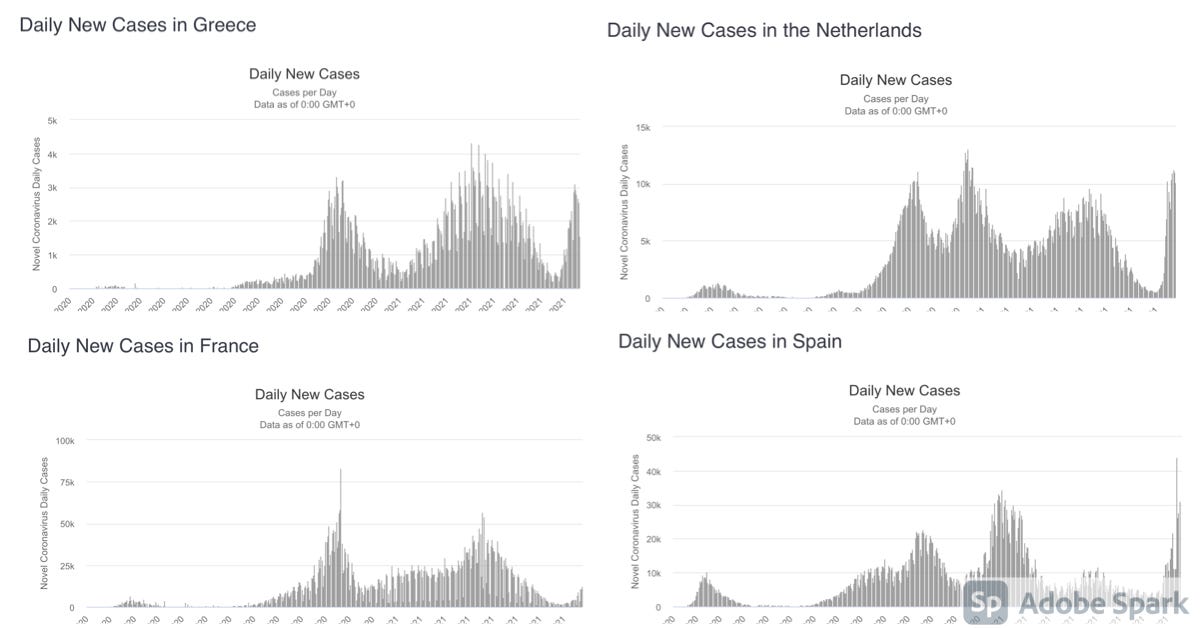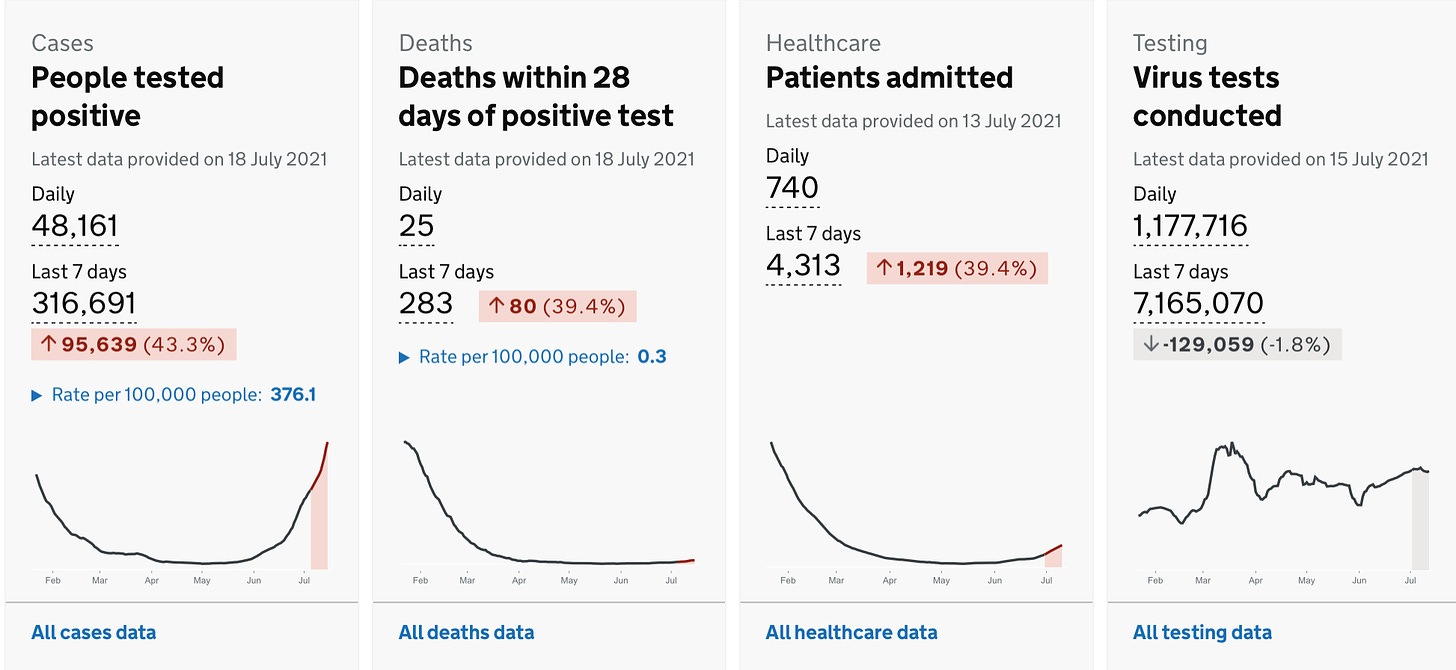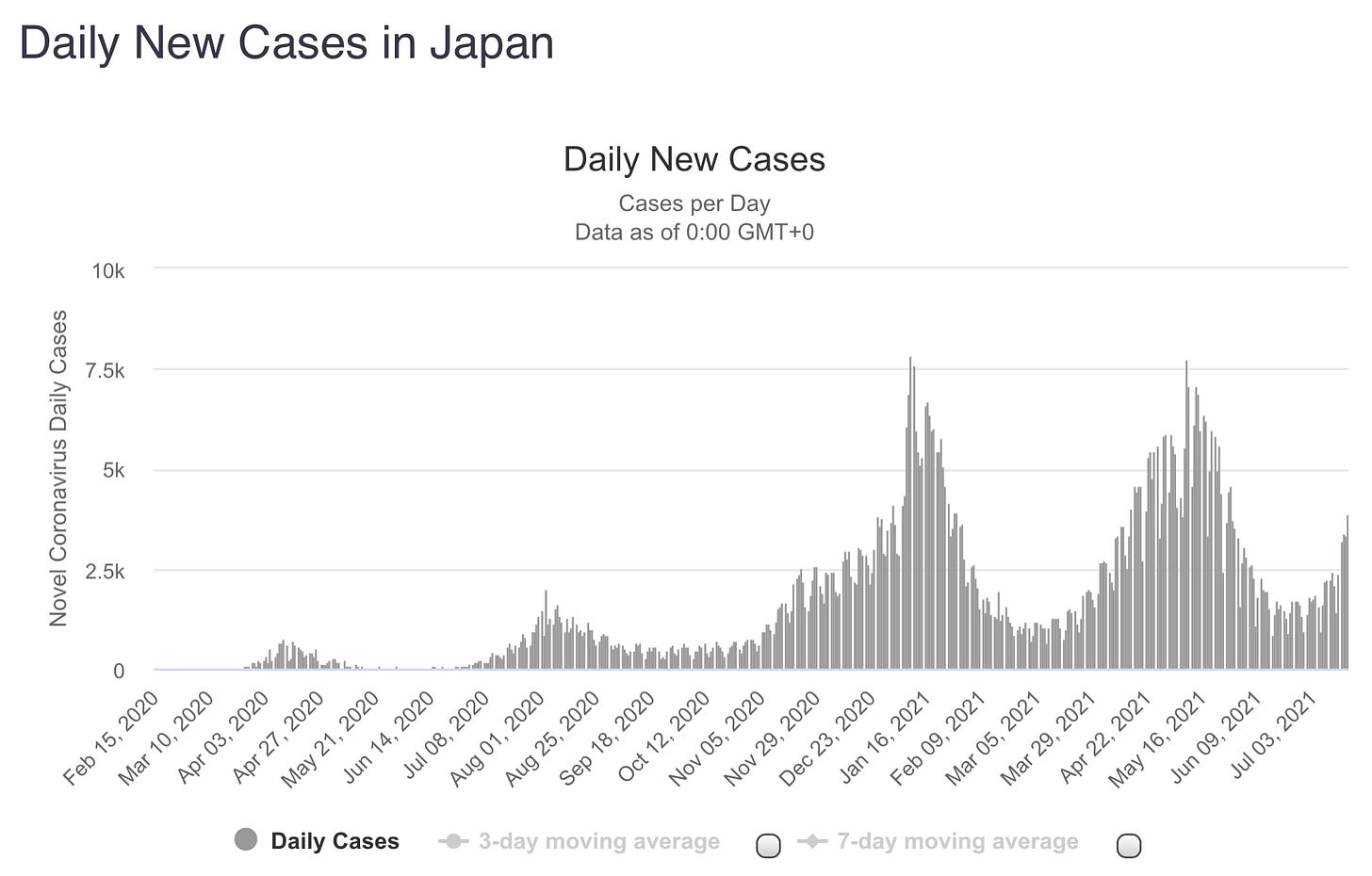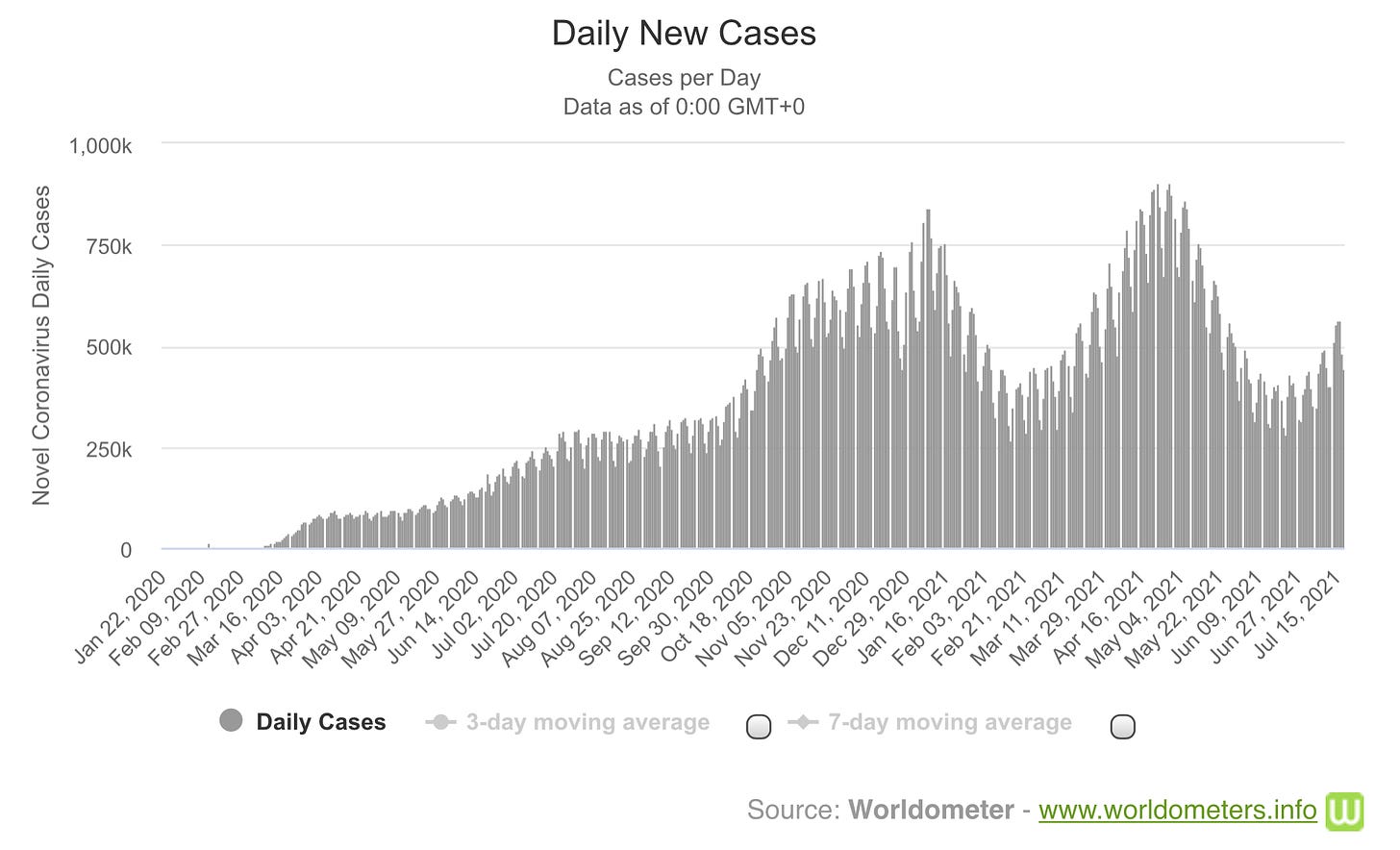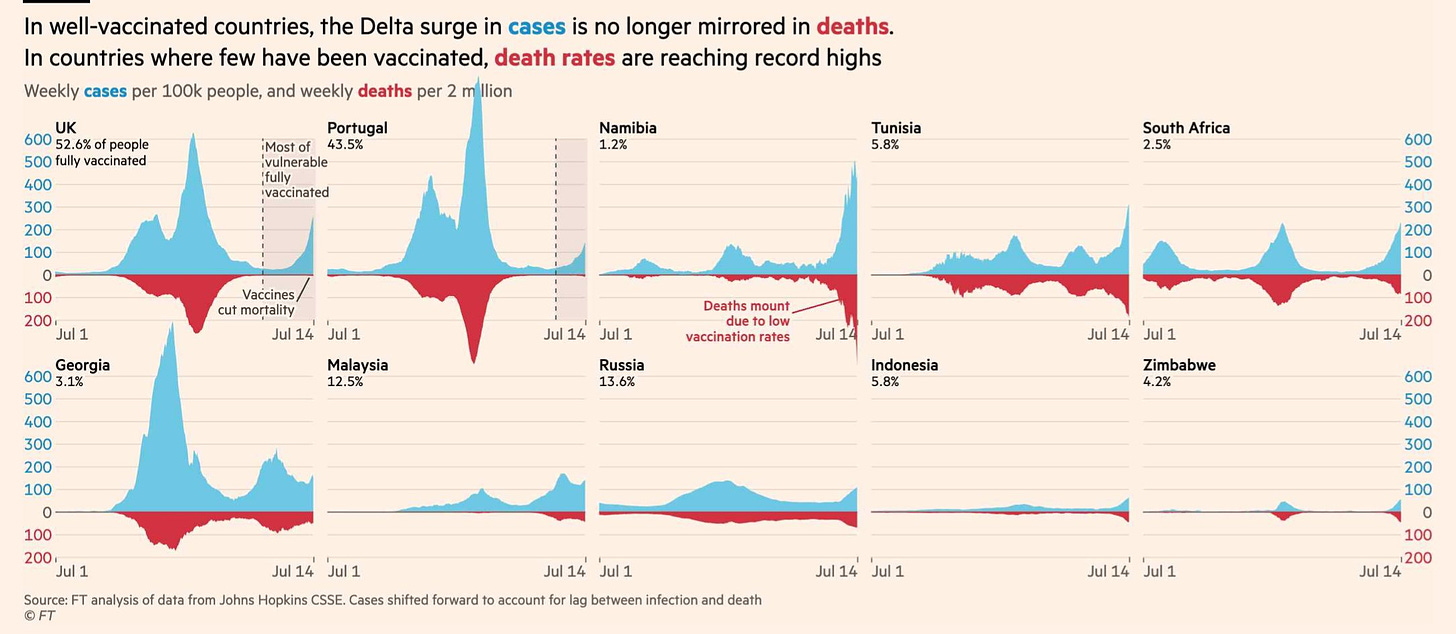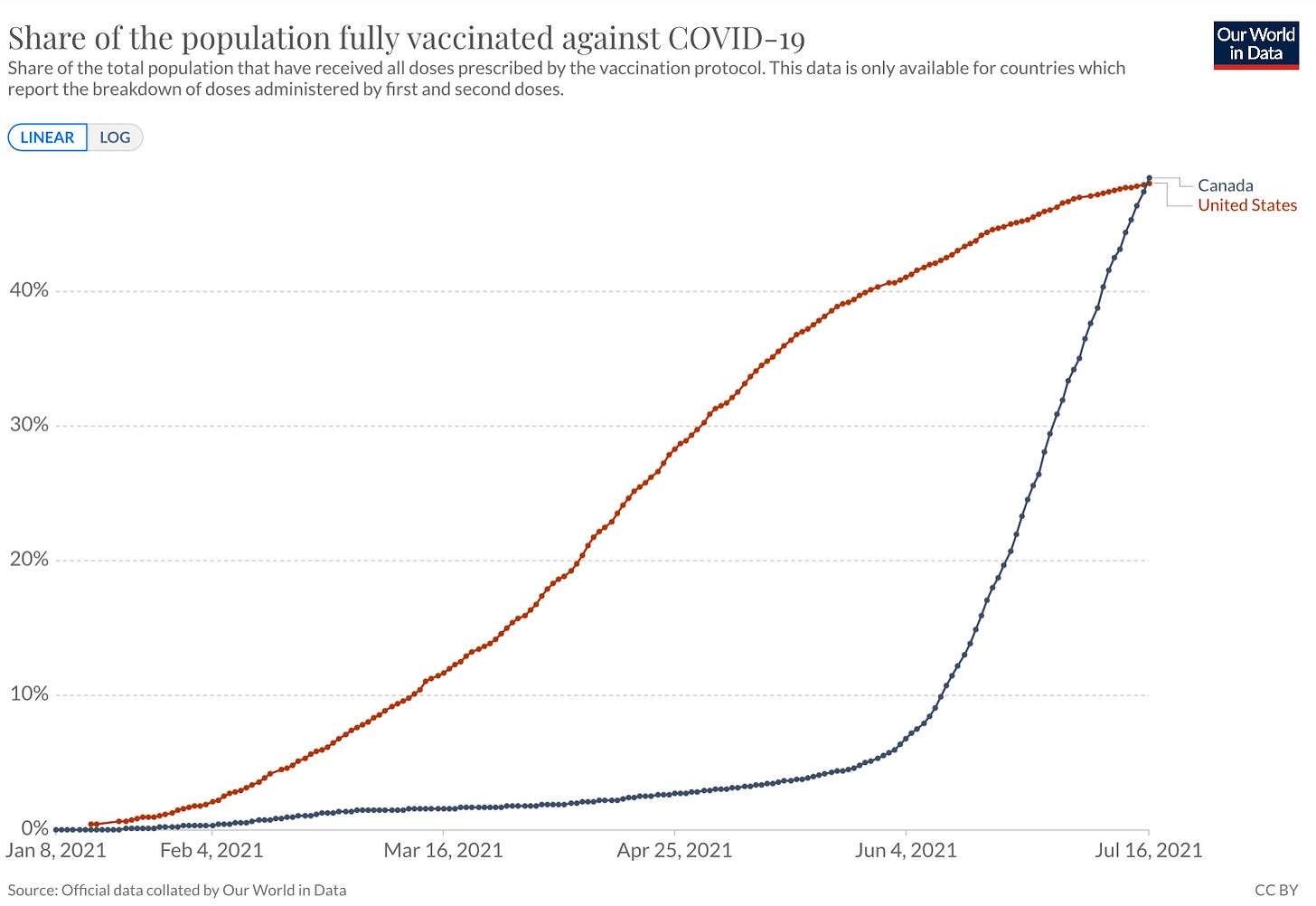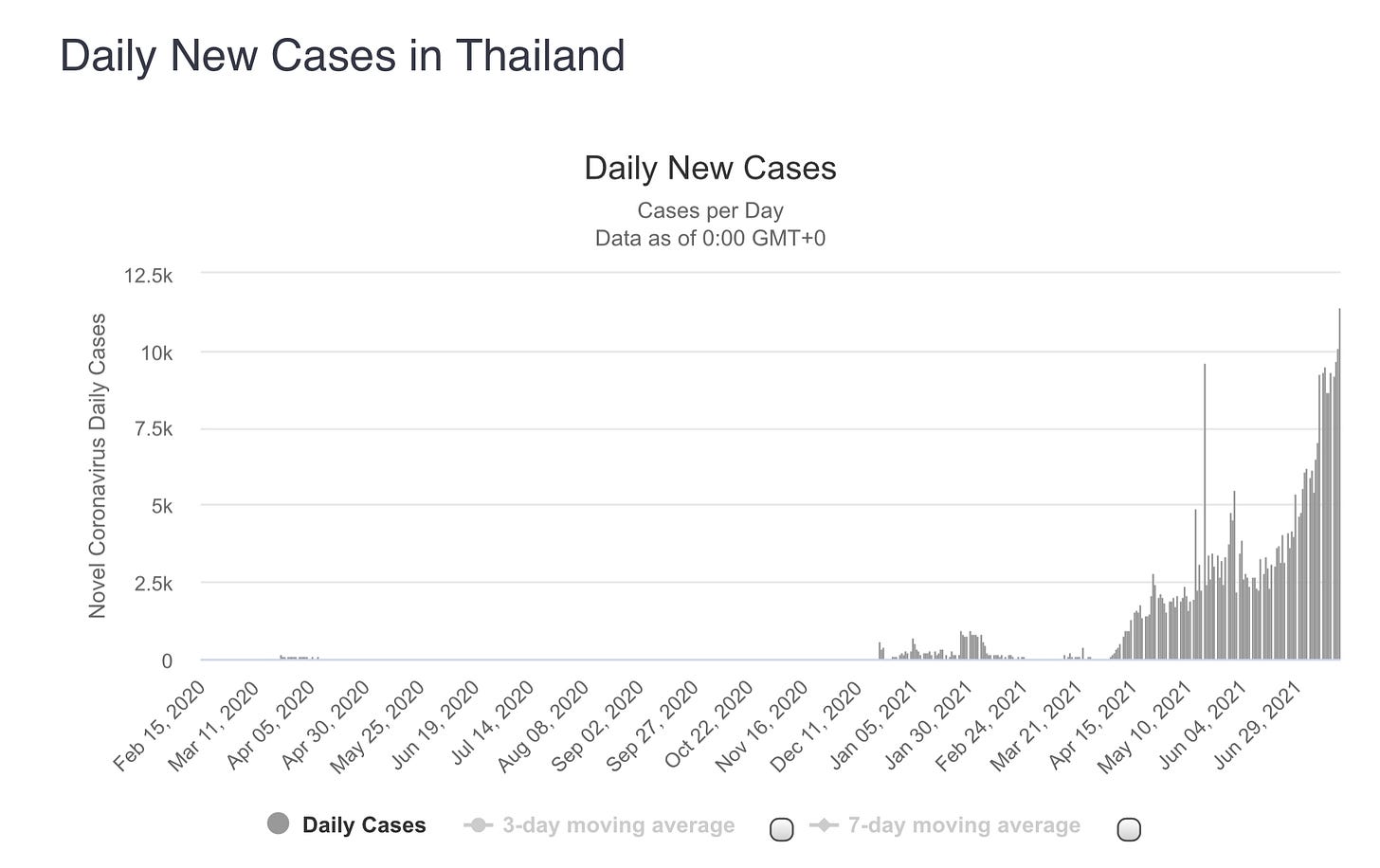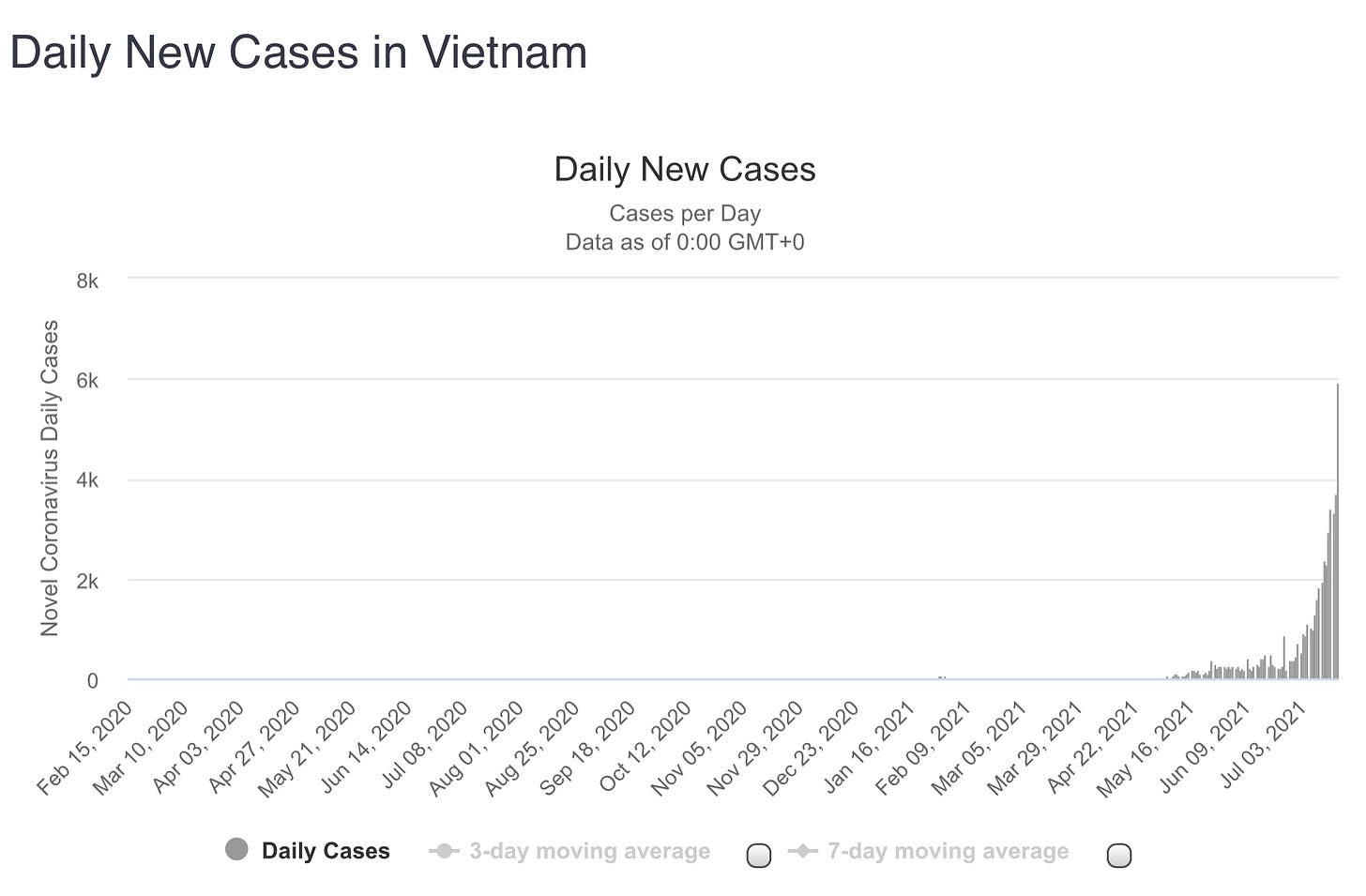Monday Morning News & Notes
Denmark makes more COVID risk travel changes and becomes the brunt of others
🇩🇰
Danish Foreign Affairs has made its weekly changes to its COVID risk assessment of other countries across Europe and outside the EU.
The biggest change is that all of Great Britain, except for Wales, has now been coloured high-risk red. All travel to Great Britain is strongly discouraged.
Also now coloured high-risk red are Cuba, Malaysia, Libya, Tunisia, and Iran.
Ukraine moves to yellow. Rwanda, and Thailand are now orange, as are Brazil, Chile, Paraguay, Uruguay, Bangladesh, India, and Nepal, who were all downgraded from being high-risk red.
In the European Union, Latvia has been upgraded to orange due to placing significant entry restrictions on travelers from Denmark. While Luxembourg and the Netherlands are now yellow, along with Greece, except for the regions of Northern Aegean, Eastern Macedonia and Thrace, Central Macedonia, Western Macedonia, Ionian Islands, Western Greece, Central Greece and the Peloponnese, which all stay green.
On Sunday, Danish Foreign Affairs downgraded Ireland from medium-risk orange to low-risk yellow.
Yesterday, Denmark also shifted Norway from near-normal green to medium-risk orange due to entry restrictions placed on travelers from some Danish regions. Norway now considers Region Sjælland, Region Midtjylland, and Region Nordjylland COVID red zones due to rising infection rates.
Travelers from those regions can only enter Norway if they are a citizen, permanent resident, or meet one of the few exemptions. Among those are if you are fully vaccinated, had a previous infection within the last six months, are visiting a close relative, or are seeing someone you are in a relationship with. Even then, a negative test is required before boarding a flight, or a ferry, another test is required at the border, and quarantine mandates apply.
-
As of July 18 (Sunday) Germany has designated Denmark’s capital region (Metro Copenhagen) and the Faroe Islands as COVID-high-risk areas. This means travelers from those areas must register their entry into Germany, along with proof of full vaccination, or recent previous infection, or recent negative coronavirus test, at www.einreiseanmeldung.de. A negative PCR test result must be no more than 72 hours old, while a rapid test can be no more than 48 hours old.
Anyone traveling into Germany from Denmark outside the capital region by land or sea are exempt.
-
Denmark has added 2,631 COVID infections and two more deaths since Thursday’s update. There were 960 infection reported on Friday, 1,030 on Saturday, and 641 on Sunday.
-
On the vaccination effort, another milestone has been reached, with two of every three people in Denmark now having a first dose.
To date, 3,902,740 1st-dose vaccinations (66.7% of the total population) have been administered while 2,621,098 people (44.8%) are now fully vaccinated.
Yesterday, 50,855 total inoculations were done.
-
The Danish National Health Authority continues to try and expand vaccine coverage by making the system more flexible. The gap between the first and second Pfizer dose has been reduced to three weeks. Moderna remains at four. The health board says people can now cancel their second dose appointment and move it up to get their second Pfizer dose faster. You can do it online at www.vacciner.dk or using one of the hotlines below.
The health authority has already made changes to allow for getting one vaccine dose in one health region and the second in another. This is to accommodate summer holiday travel, so people can get a second dose where they are instead of having to return home.
-
As of July 16 (last Friday) the Danish Health ministry has increased the limits triggering the automatic lockdown of a kommune (municipality) or parish district within the kommune. The COVID incidence rate per 100,000 residents triggering an automatic lockdown has been raised to 500 for a kommune and 1,000 for a parish.
The other limits for the minimum number of infected and the positive percentage are maintained.
The Staten Serum Institut credits the continued high vaccination rate for being able to make the changes.
🇸🇪
For a third week in a row, Region Stockholm has recorded an increasing number of new COVID infections. The Swedish capital region health authority says infections are being seen most among young people aged 18 to 29 years old. Again summer travel is playing a major role with “a large proportion” of the infection cases coming from travel abroad, especially among people returning from Spain
Chief Physician Elda Sparrelid:
“Holidays mean too many deviations from much of what we do in everyday life. I wish you a fantastic summer, but the basic advice should continue to be followed regardless of whether you are on holiday at home, elsewhere in Sweden or abroad.”
There were 374 new coronavirus cases recorded in week 26. That increased to 440 in week 27. Region Stockholm says as of Friday last week (week 28) they have recorded 606 new infections.
“This is the third week in a row we see a clear increase in the number of infected and it is very worrying even though the increase is still from low levels. The increase clarifies how urgent it is that everyone who is now offered vaccination also starts their vaccination and those who have the opportunity to take the second dose book it as soon as possible. Now it is the young group of 18-29 year olds who are overrepresented when it comes to being found infected, which is natural because they have had the shortest time to be protected through vaccination.”
Last Monday, the Swedish Public Health Agency tightened recommendations mandating that everyone who has traveled outside the Nordic region should be tested when they return home, regardless of whether they have symptoms or not.
Staffing shortfalls at Region Stockholm’s emergency hospitals is also a major issue. Existing staffing shortages are being exacerbated by getting exhausted workers, some desperately needed time off and care staff being called away to help with the vaccination campaign. The region says this is resulting in a shortage of impatient care beds and long waiting lines for those seeking emergency care.
-
The Swedish Public Health agency is also noting increased infection activity in several regions, but adds overall cases remain at a low level. Other than Region Stockholm, it says coronavirus numbers are also rising in Region Jämtland Härjedalen. The National health agency is also finding that an increasing number of corona cases is due to travel abroad. Behind the rising numbers, it points to the Delta variant noting it now accounts for 60% of all new infections in the country.
🇳🇴
Vaccination uptake in Norway continues to soar, according to a survey conducted by the Norwegian Institute for Public Health. The survey found 93% of respondents are ready and willing to get the jab. Among young people, support for vaccination was a sky-high 90%.
Director Camilla Stoltenberg says Norway is “at the top of the world” for vaccine coverage.
“We have had a steady increase in the desire to use the offer of coronary vaccination in Norway. This measurement shows the highest support since the vaccination program started. The fact that we have a fantastic support for coronary vaccination in Norway gives hope of achieving good herd protection in society. Then the road is shorter to a more normal everyday life.”
Support for vaccination was highest among seniors 60 years old and older, with 99% pro-vaccination. As for why people are so keen on getting vaccinated, they said in the survey that they want their normal lives back, see friends and family they have missed, protect themselves and their loved ones, as well as to travel.
The survey found just 3% who are not going to get vaccinated, with the other 4% saying they aren’t sure.
🇫🇮
Finland has registered another 564 infections over the weekend. 384 infections were reported on Saturday and another 180 on Sunday. Its total number of infections now exceeds 100,000.
As of Sunday there are 34 infected people in hospital with ten in an ICU.
-
YLE is reporting that a sailing event in the south-western town of Hanko has become the latest COVID infection concern. The event, held from July 8 to 11, has resulted in at least 79 confirmed infections so far, 14 different restaurants and a campground are all listed as being potential exposure sites. Anyone who was at the regatta is urged to get tested as soon as possible.
🇪🇺
Across Europe, the Delta variant continues to make its presence felt. It is driving numbers up in Greece, the Netherlands, and Spain. In France, its infection curve is also now rising.
🇫🇷
The famed Eiffel Tower reopened on Friday in Paris. It had been closed for eight months due to the pandemic. That is the longest time the tower has been closed since World War II. The reopening was met with cheers and applause as people lined up to be among the first visitors.
Face masks are mandatory, as is a coronapas to visit the tower. Capacity in elevators to the top has been cut in half to allow for social distancing.

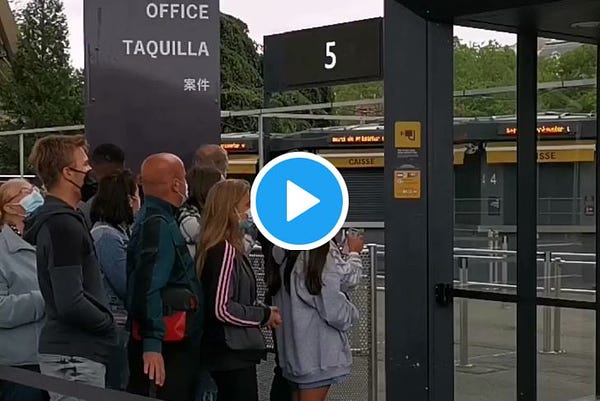
🇬🇧
The United Kingdom continues to see its infection curve rise rapidly, as it reported over 100,000 new infections over the weekend. 54,486 new COVID cases were reported on Saturday and another 48,161 on Sunday.
The rate of infections, fatalities, and hospitalizations all continue to trend upward over the last seven days in one of the world’s most vaccinated countries.
Today is the so-called ‘Freedom day’ in the UK with all coronavirus restrictions lifted.
🇯🇵
COVID left the starting line early as it infiltrated the sealed-off section of the Olympic Village in Tokyo with someone described as a games organizer testing positive. The positive test was confirmed Saturday, after International Olympic Committee President Thomas Bach said there was “zero risk” of infecting anyone outside the Olympic village bubble.
On Sunday, another five infections were confirmed, with three of them being athletes and another two cases confirmed in the Olympic Village.
The waterfront bubble will host some 11,000 athletes, media, and organizers from around the world. Residents in Japan are very concerned about the games posing the risk of becoming a coronavirus super-spreader event.
Overall COVID numbers are on an upward march in Japan.
🌎🦠
The Delta variant is driving new infection waves as global COVID numbers are once again rising.
-
The Financial Times has done an analysis of Delta variant-driven infection surges and fatality rates in counties with both high and low vaccination coverage. It found that while nations with high vaccination rates are keeping deaths more or less in check countries with low vaccination coverage are seeing very high, and, in some cases, record numbers of coronavirus deaths.
🇨🇦
Prime Minister Justin Trudeau said late last week that Canada is on track to open the border to fully vaccinated travelers from the United States by mid-August. Trudeau added the border could be further opened in September to all fully vaccinated international travelers. We will have to wait to see what this means as far as the fine print when an official policy is unveiled.
-
Over the weekend, Canada passed the United States for the percentage of the population that is fully vaccinated. The Canadian effort continues to steam along, while the American vaccination campaign runs right into a wall of vaccine hesitancy.
🇹🇭
Yesterday Thailand recorded its highest ever number of new coronavirus infections.
🇻🇳
Thailand was not alone as nearby Vietnam also saw the most new COVID infections of any day in the pandemic yet yesterday.




